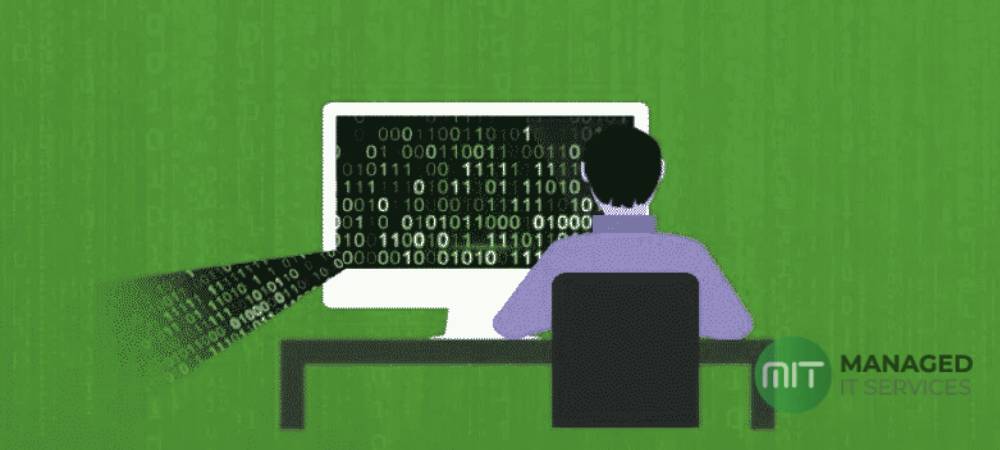Data leakage is a growing concern for organizations due to its associated costs. During the pandemic, most businesses shifted to online working. While there is nothing wrong with the online working model, businesses inadvertently created problems for themselves. They did not develop data security policies or train their employees on cybersecurity. As remote working and online work models are expected to stay even after the pandemic, businesses must pay attention to data leakage. You might think that your business is safe but think again. The below figure shows data leakages across different industries globally.
Figure 1. Data Breaches Worldwide (Source: Statista)
The above figure shows that no industry is safe from data leakages. Today, we will talk about data leakage, its types, its impact on the organization, and what can be done to address the problem.
Data Leakage Defined
It is the unauthorized transfer of data from the organization to an outsider. The outsider can be another organization or an individual. It is also known as information leakage. Today, hardly a week goes by without hearing the news about a data breach or a cyberattack. The leakage can be done electronically (through the internet) or physically (e.g. USB). Regardless of how it is done, data leakage is disastrous for any organization. Let’s review its types.
Types of Data Leakage
Information leakage can occur through:
- Negligence
Research shows that most data leakages are due to employee negligence. For example, when emailing a file, they might send it to the wrong recipient. Employees also have a habit of taking pictures in the office while working. At times, the information on the computer screen is visible. If the picture is uploaded to social media, it can spell trouble. Sometimes, organizations discard old hard discs without following the correct data destruction process. MITS provides certified data destruction services in Pakistan. Organizations fail to recognize that data is still recoverable after formatting a hard disc.
- Disgruntled Employee
There are numerous cases where disgruntled employees have stolen confidential information and leaked it on the internet. It is their way of getting back at their employer. A disgruntled employee does not need to be a tech wiz to take out the information from the organization. Usually, employees take out confidential information in USBs, by taking photographs or printing/photocopying it.
- Phishing
The last type of data leakage is phishing. A cybercriminal may infiltrate a company’s IT network through an email. There are numerous cases where cybercriminals have posed as clients or the company’s employees. An unsuspecting employee may click on the link within the email, thinking it is from a fellow employee or a client. After clicking the link, the system automatically downloads and installs a malware/virus. With the help of the malware/virus, the cybercriminal can gain access to the system and start the data leakage process.
Impact on the Organisation
- Reputation Loss
Regardless of the data leakage type, one thing is evident – the organization’s reputation will take a hit. Your customers and clients will hesitate to continue working with your business as they fear that their information is not safe.
- Revenue Loss
When you start losing customers, your revenue will take a hit. It will impact your ability to compete with others, improve organizational processes, or hire top talent.
- Lawsuits
Remember, businesses and individuals are increasingly becoming concerned about how their private information is obtained, stored, and utilized. They will not hesitate to begin legal proceedings when they find out their information is leaked to unauthorized entities
Regulatory Action
The regulator might spring into action depending on the breach and its scale. The most likely result is a hefty fine and increased monitoring.
How to Avoid Data Leakage
- Monitor Network Access
You need a managed IT service provider to monitor your network continuously. It will allow you to assess if any unauthorized activity is going on.
- Educate Your Workers
The first thing that you need to focus on is educating the workforce on cybersecurity. As said earlier, most data leakages are due to employee negligence. Therefore, educating them on handling data is of utmost importance nowadays.
- Identify Sensitive Data
Every business holds sensitive data such as trade secrets, analytics, and customer information. As a business, you must identify sensitive data.
- Data Encryption
After identifying the sensitive data, start the encryption process.
- Review Data Access Policies
Not every user requires access to sensitive data. Therefore, revoke the access of individuals who do not need such data. Keep monitoring the individuals with access. It is best to place a system which creates logs of everything a user does while accessing the data. Remember to inform the employees about this practice. Otherwise, it may be considered illegal workplace surveillance.
- Strong User Credentials
Employees must be asked to ensure that their login credentials are not easy to decipher. For example, passwords must not include names, favourite colours, or anything similar. Instead, a password must be strong. There must be a policy to change the password every 45 days.
- Data Destruction
Lastly, organizations must follow the correct IT asset disposal process to avoid unauthorized access to the data.
Conclusion
This concludes our article on data leakage. If you still have any questions, feel free to contact us. Lastly, we are a leading managed IT services provider in Pakistan. You can avail of our services to monitor your IT network 24/7 and keep it secure.




